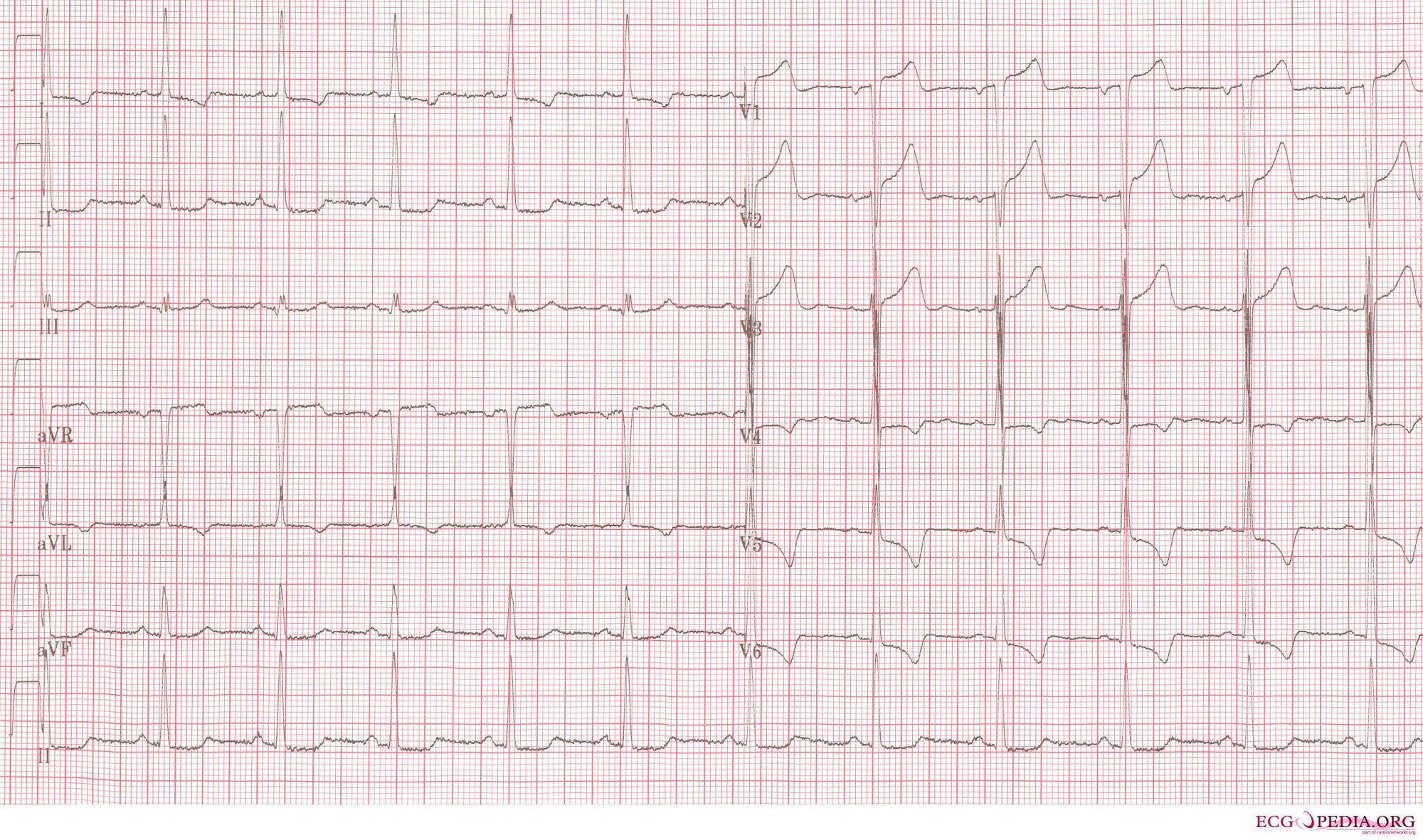Left ventricular hypertrophy electrocardiogram
|
Left ventricular hypertrophy Microchapters |
|
Differentiating Left ventricular hypertrophy from other Diseases |
|---|
|
Diagnosis |
|
Treatment |
|
Case Studies |
|
Left ventricular hypertrophy On the Web |
|
American Roentgen Ray Society Images of Left ventricular hypertrophy |
|
Directions to Hospitals Treating Left ventricular hypertrophy |
|
Risk calculators and risk factors for Left ventricular hypertrophy |
Editor-In-Chief: C. Michael Gibson, M.S., M.D. [1]
Overview
The electrocardiogram (EKG) often shows signs of increased voltage from the heart in individuals with left ventricular hypertrophy, so this is often used as a screening test to determine who should undergo further testing with an echocardiogram.
Electrocardiogram
Electrocardiogram Criteria for Diagnosing LVH
There are multiple criteria used to diagnose LVH via electrocardiography. None of them are perfect. However, by using multiple different criteria the sensitivity and specificity are increased.
The Sokolow and Lyon criteria
The Cornell criteria1 for the EKG diagnosis of LVH involves measurement of the sum of the R wave in lead aVL and the S wave in lead V3. The Cornell criteria for LVH are:
Other voltage-based criteria for LVH include:
EKG Examples
Shown below is an EKG with an R wave in lead V5 (26mm) and an S wave in lead V1 (15mm). The sum is 41 mm which is more than 35 mm and therefore LVH is present according to the Sokolow-Lyon criteria.

Copyleft image obtained courtesy of ECGpedia, http://en.ecgpedia.org/wiki/File:E_lvh.jpg
Shown below is an EKG with an S wave in lead V1 (24mm) and an R wave in lead V6 (21mm). The sum is 45mm which is more than 35mm depicting left ventricular hypertrophy. The EKG also shows an R wave in lead aVL (23mm) which is more than 11mm. Thus, both conditions in Sokolow and Lyon criteria are fulfilled.

Copyleft image obtained courtesy of ECGpedia, http://en.ecgpedia.org/wiki/File:Extreme_lvh2.jpg
Shown below is an EKG with an R wave in lead I (17mm) which is greater than 14mm. The S wave in lead V1 is 21 mm and R wave in lead V5 and/or V6 is around 24 mm. The sum is 45mm which is more than 35mm and thus left ventricular hypertrophy is present according to Sokolow-Lyon criteria.

Copyleft image obtained courtesy of ECGpedia, http://en.ecgpedia.org/wiki/File:LVH.png
Shown below is an EKG with an S wave in lead V1 (25mm) and an R wave in lead V6 (17mm). The sum is 42mm which is more than 35mm and therefore LVH is present according to Sokolow-Lyon criteria.

Copyleft image obtained courtesy of ECGpedia, http://en.ecgpedia.org/wiki/File:Extreme_lvh.jpg
For more EKG examples of left ventricular hypertrophy click here.